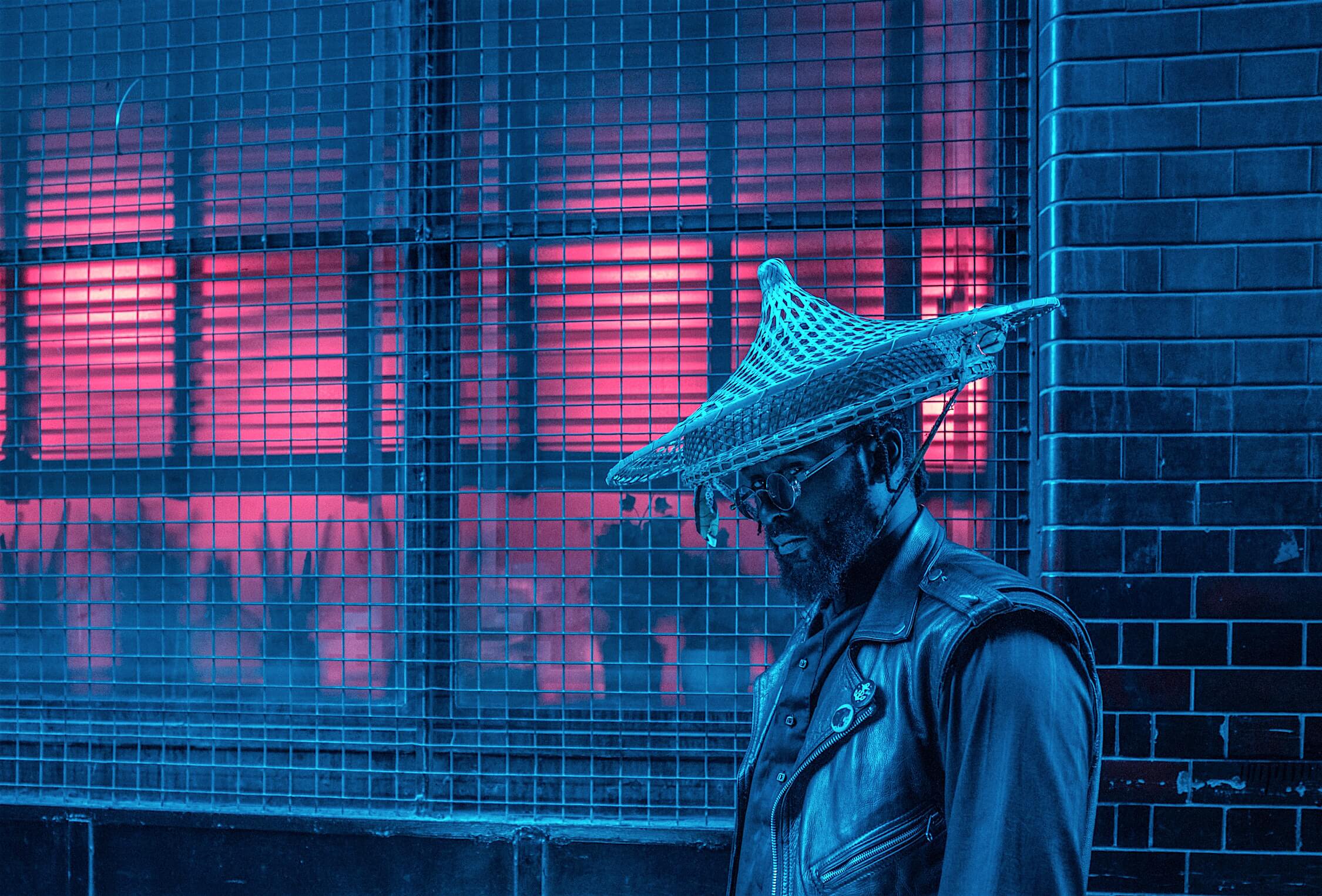https://habr.com/en/company/spbifmo/blog/486412/- ITMO University corporate blog
- Reading room
- Science fiction
Cyberpunk has become an integral part of our pop culture. Everyone is familiar with at least some works in the genre and their particular flavour of dystopian technologically advanced universes. But science fiction is always evolving. In this piece, we’ll be taking a look at cyberpunk’s successors and the futures they envision — from pan-African empires to shopping culture gone amok.
 Фото Quinn Buffing / Unsplash.com
Фото Quinn Buffing / Unsplash.com
From Jonathan Swift to the Wachowski sisters,
speculative fiction played an important social and cultural role. These works of art invited us to collectively reassess the choices we were making, look critically at the unstoppable machine of progress. Cyberpunk and its derivatives reigned supreme in the era of computers, raising questions about the ethics of modern technology, the nature of digital reality, and the role of humans in a world run by machines. But now that the Matrix is 20 years old, cyberpunk is on its way out.
Many predictions made by these works now seem improbable or irrelevant. The ‘low life, high tech’ settings make for entertaining content, but it’s just as possible that future humans will never live in digital slums and run-down nuclear shelters. Time is ripe to start asking new questions and exploring new possibilities. Thankfully, there are newer genres that do just that. And some of them are on the verge of going mainstream.
Mythpunk: building the future we deserve
The western world still enjoys a high degree of global cultural influence. But that might not last long. Other cultures are growing in size and importance. People of colour are heard far beyond their local communities, on online platforms and real-life stages alike, and their contribution to our global economy is steadily growing.
Sociologists predict that the so-called ‘European’ civilization might lose its dominance. What will take its place if that happens? Mythpunk and its subgenres, afrofuturism and chaohuan, attempt to answer this question.
Afrofuturism crafts a radically decolonised, pan-African future. It first appeared in the 1950s, when an avant-garde jazz musician by the name of Sun Ra started using African mythological motifs within a Space Age aesthetic framework. Over the past 10 years, though, the genre far outgrew its original audience. Marvel’s “
Black Panther” introduced afrofuturistic thought to millions of superhero fans worldwide. Musical artists like Janelle Monae
brought afrofuturism to the Grammies.
And, of course, there are dozens of popular afrofuturistic books.
 Фото Alexander London / Unsplash.com
Фото Alexander London / Unsplash.com
Chinese culture is also spreading faster than we can imagine. Despite being a late bloomer in terms of economic development, and taking its time to master the instruments of soft power, you can safely say that modern China is a global force. But, of course, rapid development comes at a cost, and the Chinese themselves are shaken by this transformation. They live in a too-strange-to-be-true world of instant skyscrapers and unstoppable progress. This surreal feeling is best described by a genre called Chaohuan (lit. “ultra-unreal”).
It is a local Chinese brand of magical realist science fiction, characterized by unbelievable storylines that might just happen in real life, and a piercing sense of existential dread. The most famous chaohuan work is Liu Cixin’s Hugo-winning “
Three Body Problem”, the first Asian novel to be awarded the prestigious prize. It revolves around a woman astrophysicist, who invites aliens to the Earth during the Chinese cultural revolution.
A unique visual identity of its own made chaohuan easily adaptable to visual media. There are multiple installation- and video artists that ventured into the genre. A good starting point in exploring this side of things would be Lawrence Lek’s video essay “Sinofuturism” (video below).
Isekai and retrofuturism: back to the future
Works in the “alternative history” genre are undergoing a revival. An increasing number of writers prefer reinventing the past to approximating the future. Their art deals with different time periods and subject matters, but still has a lot in common. Retrofuturism imagines civilizations that evolved differently from ours, typically by foregoing digital tech in favour of steam-based devices (steampunk), diesel engines (dieselpunk) or even stone age technology (stonepunk). In terms of aesthetics, it is unlike any other genre of contemporary science fiction — but you can sense the influence of cyberpunk in the way it approaches philosophical questions.
The main goal of retrofuturism is to help us reassess the role digital tools had in shaping our culture, and free us from our own pre-conceptions of what the future should look like.
Isekai (jap. “new world”) is a Japanese genre that rose to unprecedented prominence over the last decade, along with its western “portal fantasy” brethren. As the name suggests, isekai stories are fantasies about modern day heroes leaving this universe for another world — a magical kingdom, a VR video game, or a particularly exciting time period from the past. The popularity of such narratives is easy to explain.
They feed on the modern man’s longing for “simpler times”. Postmodern society has been tasked with exploring exceptionally tough ethical questions. And while the past was just as ethically complex, the 20/20 hindsight colours it black and white. So, we feel the need to redeem our ethical ambivalence by reliving history with our current knowledge at hand. The quality of ‘portal fantasies’ is often lacklustre, but their abundance is a clear sign of a deep-seated need to develop a better understanding of the present.
Vapourwave: the present as history
If all of the aforementioned genres existed for decades, in one form or another, vapourwave is a creation of the 21st century. Just like afrofuturism, it was originally a musical genre — and is only now starting to spread to other art forms. It is uniquely modern, surreal, and descriptive of the current cultural struggles. While other speculative frameworks are meant to provoke ethical judgements, vapourwave embraces the ambiguity of the contemporary world. It is occupied with the consumer society of here and now. It makes no distinction between the ‘high culture’ of opera enthusiasts, and the ‘low culture’ of Black Friday deals. It works off the premise that the entirety of our society is ‘low culture’, no matter what we choose to consume. To illustrate this point, vapourwave takes seemingly worthless everyday phenomena, like elevator music, promotional graphics, etc. — and ‘elevates’ them to the status of high-brow art. The end result hits us where it hurts, in all its glorious irony.
Most people know vapourwave through the work of electronic acts like BLACK BANSHEE and Macintosh Plus. But other forms of art are catching up to the innovations of vapourwave musicians. Several years back Netflix released a vapourwave-inspired original animated series called Neo Yokio. It deals with posh exorcists who paint their hair pink and talk fashion, while the rest of the world lives in poverty. Despite being ridiculous, it is a brilliantly numbing critique of our current society.
The genres we mentioned above aren’t the end-all-be-all of modern sci-fi. But taking a look at them can greatly enhance our understanding of current social issues, and collective aspirations. We just need to remember that imaginary futures exist for an external purpose. At their worst, they are power fantasies. But more often than not, they are tools to make sense of, and sometimes even redeem our troubled present — and our past.
Further reading:

